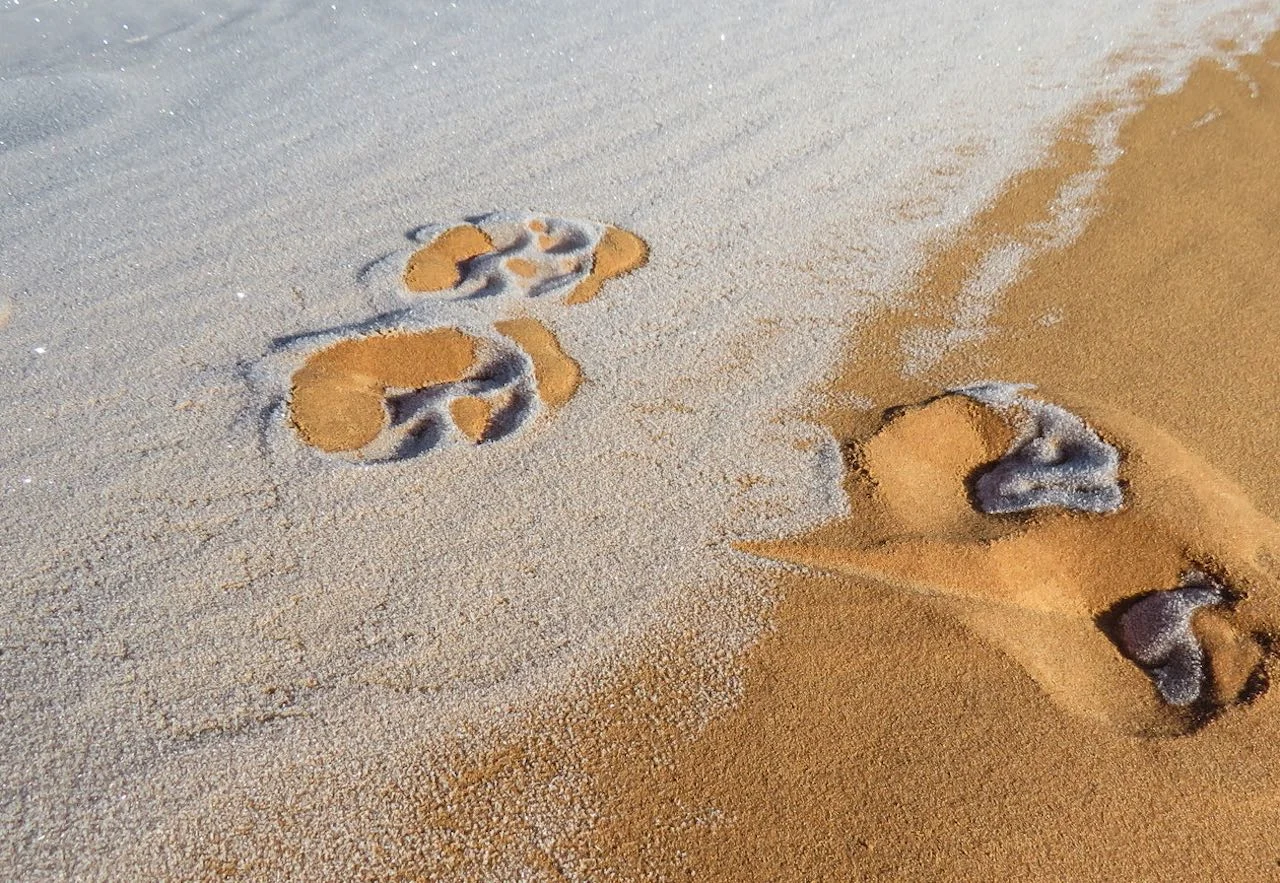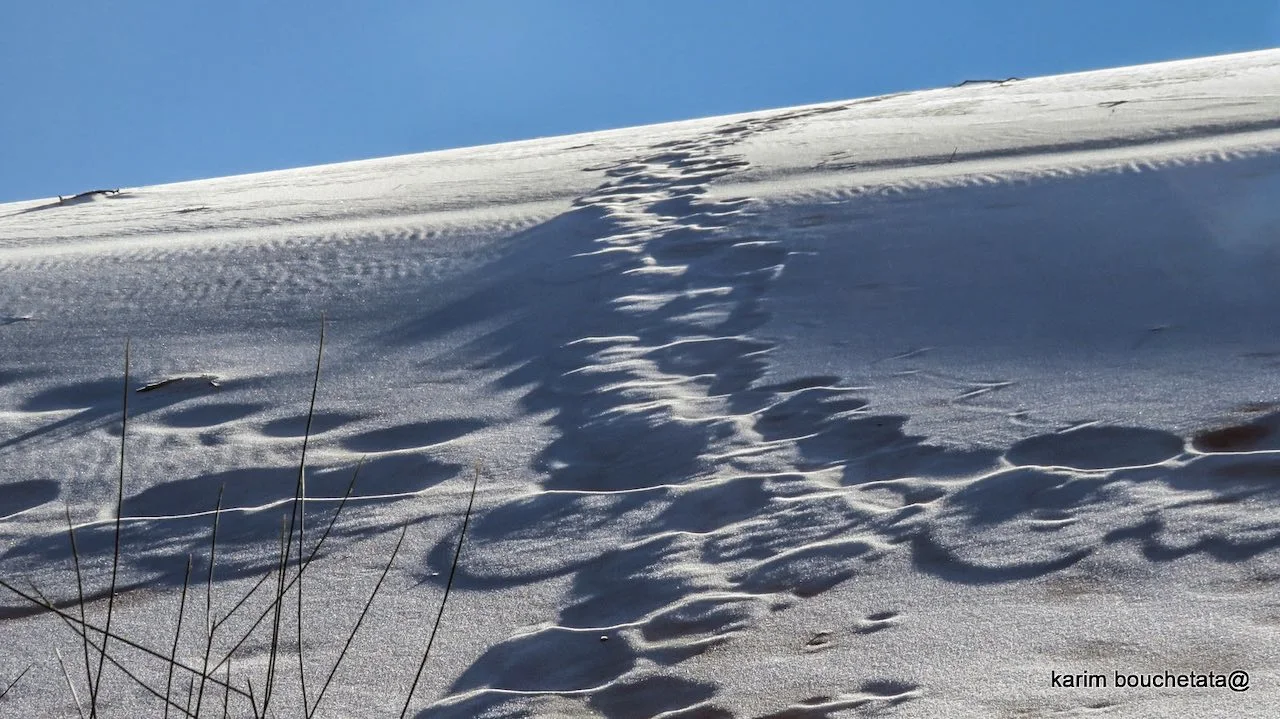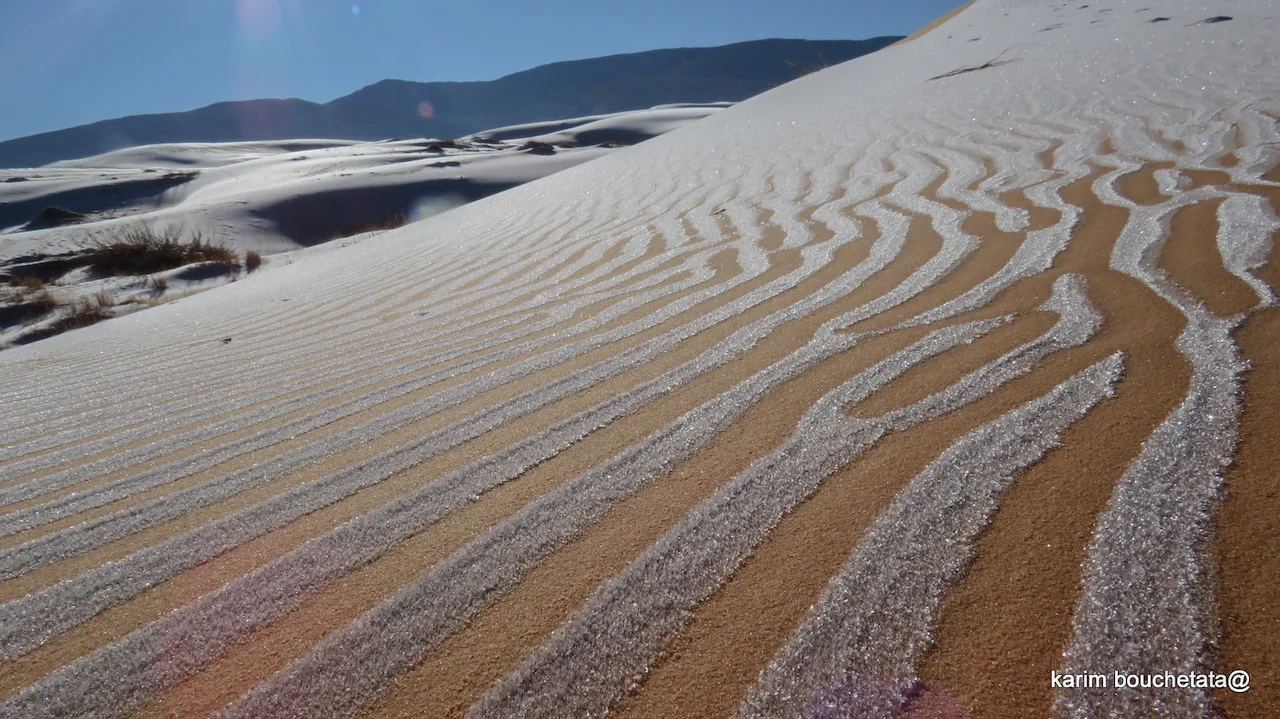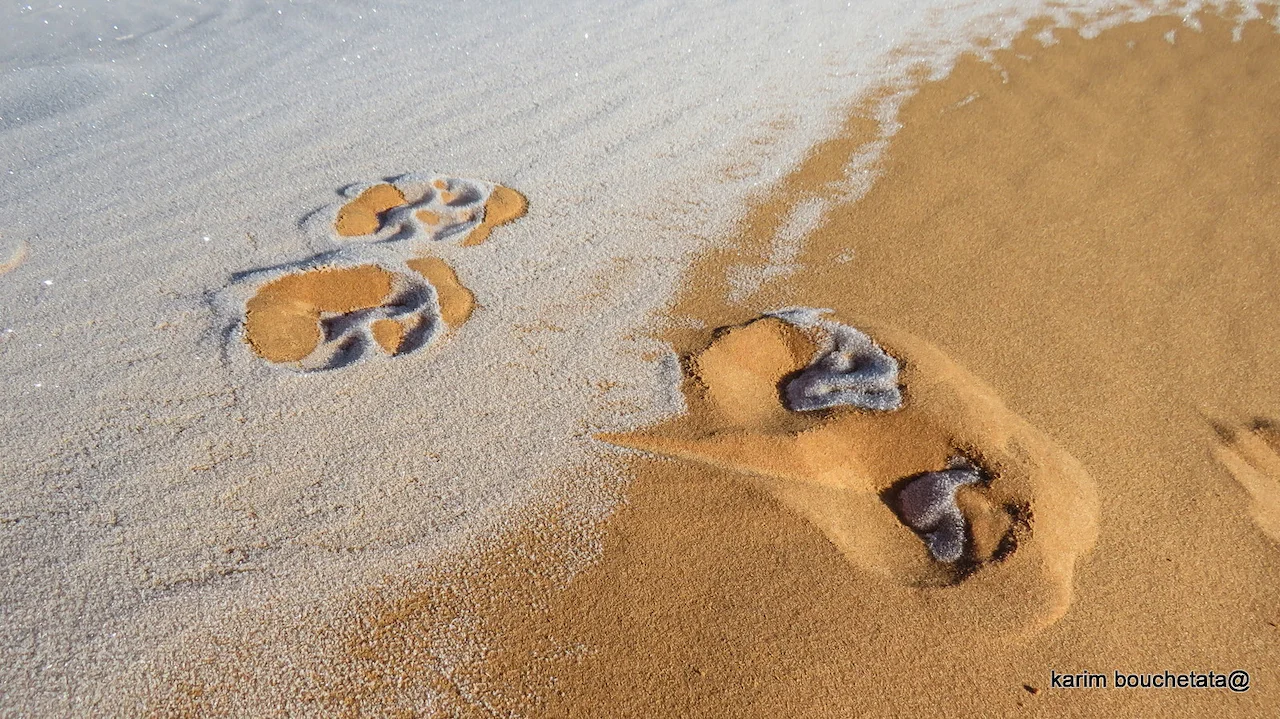
Ice covers the Sahara Desert for just fourth time in over 40 years
The icy occurrence in the Sahara Desert doesn't typically last long, so photographer Karim Bouchetata was certainly in the right spot at the right time.
While the Sahara Desert is usually known for its hot, uninhabitable conditions, wintry-like phenomena has happened before. It just doesn't happen often.
In fact, when it occurred last week, it was only the fourth time in the last 42 years that a thin layer of ice formed in the Sahara. Local photographer Karim Bouchetata was there to capture it on camera.
Bouchetata snapped photos of the ice on the dunes near the town of Ain Sefra, located in northwestern Algeria. Aïn Séfra is situated about 1,000 metres above sea level, with the Atlas Mountains surrounding it, not far from the Algeria-Moroccan border. And it has snowed there before.

Last week's surfacing of the ice was only the fourth time in the last 42 years that had formed in the Sahara. Photo: Karim Bouchetata.
The Sahara is the biggest hot desert in the world, encompassing 8.6 million kilometres (3.3 million miles) across North Africa -- from the Atlantic Ocean to the Red Sea. So to see the sand grazed in white is quite a spectacle.
While this latest sparkling of ice seems impressive, it pales in comparison to the snowfall that occurred in the Sahara in December 2016 -- the first time in 37 years -- or January 2018, when as much as 40.6 cm were reported in some places.

Bouchetata snapped photos of the ice on the dunes near the town of Aïn Séfra, located in northwestern Algeria. Photo: Karim Bouchetata.
Unfortunately, the icy occurrence doesn't typically last long, so Bouchetata was certainly in the right spot at the right time.
To clarify any possible misconceptions about the photos, Bouchetata told The Weather Network in an email that it was ice, not snow, that had settled in the swirling sands of the Sahara.

The Sahara is the biggest hot desert in the world, encompassing 8.6 million kilometres (3.3 million miles) across North Africa. Photo: Karim Bouchetata.
Thumbnail courtesy of Karim Bouchetata.
Source: IFLScience











